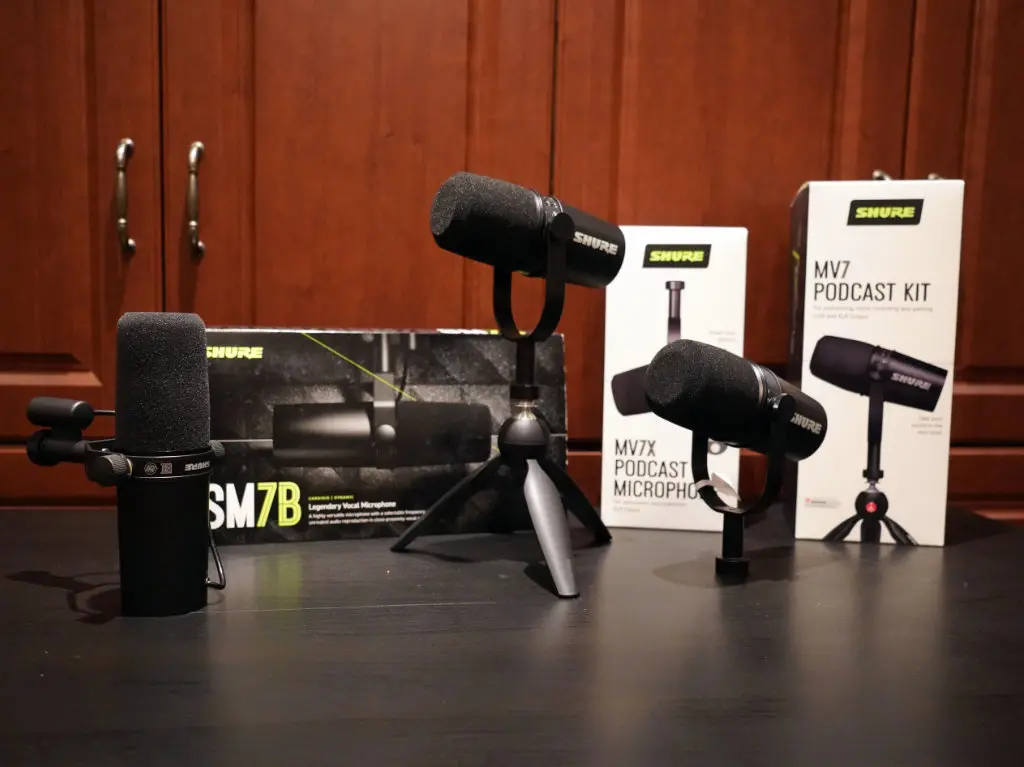
For those that are interested in creating their own podcast, the first step is picking the right microphone and Shure has you covered with the SM7B, MV7, and MV7X microphones. Podcasting has quickly become a beloved medium that is consumed and produced daily by millions of people. While video is often provided, the main focus for podcasts is the dialogue, propelled by the human voice. Shure has a long history of making industry standard options for radio and studio applications. This expertise has spilled over to the podcasting world and I’m here to review some of their offerings.
First of all, make sure you check out this video that documents the features of each microphone and my thoughts on how you can use them for your needs.
Shure SM7B microphone features
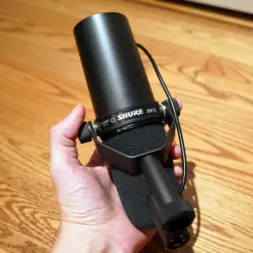
Shure’s SM7B is a long-standing, beloved microphone for the human voice. The warm and smooth output is ideal for speech. The design also has many different features that reduce unwanted noise, making it a very clean option for the best possible results.
This model has been used in radio studios since its inception. It has specialized shielding that limits the hum emitted by computer monitors, neon lights, and other electrical devices. Additionally, it has an internal suspension that basically eliminates any kind of manipulation noise. When you put it on a boom arm, you can move it around without any fear of unwanted distractions. It is also equipped with a windscreen that reduces plosives, the loud-sounding consonants we try to avoid as technicians.
The SM7B is a dynamic cardioid model. This type provides very simple use, as it doesn’t require external power (such as phantom power). The cardioid polar pattern only picks up the sound that is directly aimed at it. It won’t amplify the sound coming from the back or sides, providing a very clean source and result, with minimal distractions—great for podcasts. Note that the output is only XLR, so you’ll need an audio interface to record and manipulate your recording.
More than just a podcasting mic
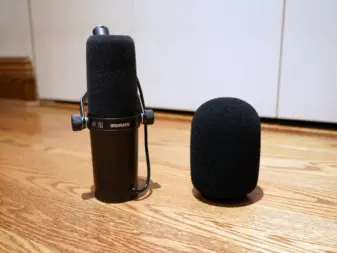
The SM7B microphone also has a long history of recording vocalists. The number of recordings it has been used on is immense and you’ve probably heard this model countless times without realizing it. Although it is featured heavily in the rock genre, its frequency response is suited to any style and voice.
Shure MV7 and MV7X microphone features
The MV7X I received is the simpler model that only has an XLR output. This is a traditional microphone design that requires a preamplifier and analogue/digital converter to record to your computer. An audio interface does both of these things.
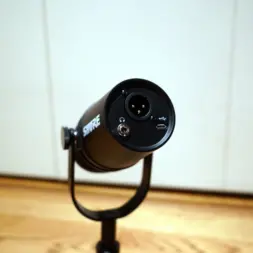
While the SM7B is marketed as a vocal microphone, the more modern MV7 is declared an actual podcasting mic. The MV7 looks like a smaller version of the SM7B. This model and the MV7X have accentuated mid frequencies, the ones that are the most characteristic in a human voice. This helps clear up speech, making it easier for your audience to understand what you and your guests are saying.
The MV7 podcast kit I received has a USB output, which essentially means that the audio interface is built-in the microphone and that you can simply plug into your computer or laptop. This makes it a great choice for recording out of the house or studio. The sound level is adjustable on the body of the mic itself, which makes solo operations a lot easier, as you won’t have to reach out to any outboard equipment or rely on a technician to do it for you. You can even mute if ever you need to.
The podcast kit includes a small, portable microphone stand. It is of Italian design. While it’s not adjustable, it seems to be of high quality. I think that it will come in very handy for those that want a minimal amount of purchases and for those that plan on taking the mic with them.
Digital convenience
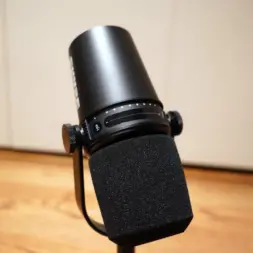
There are additional, interesting options available on the USB version of the MV7. You can monitor your recording directly on the mic, thanks to a 1/8 headphone output. You can also activate the auto-level mode which will adjust the volume of your speech so it’s relatively constant without having to heavily edit in post production. There is also a distance compensation built-in. It will further help you equalize the levels, no matter what distance you find yourself from the mic. All of this is done in real time.
Even more features are available if you get the free ShurePlus MOTIV app. Notably, you’ll be able to manually adjust your sound with access to: Gain, Mix, EQ, limiting, compression, and more.
Podcast producing is easier with Shure’s mics
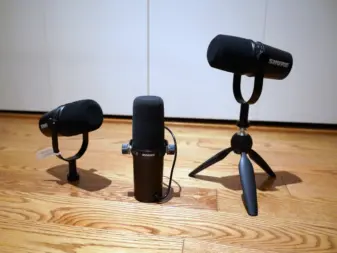
If you are producing your own podcast, it’s hard not to recommend any of these models for the clarity and intelligibility they can bring to your conversations. If you plan on staying put in the same environment or studio, the SM7B is highly recommended. It might be more expensive than the other models, but it is one of the references for speech. It is also worth investing in a boom arm. This provides a quiet, intuitive experience that will lead to a more natural conversation.
The MV7 is an excellent alternative if money is tight, if you require backup mics, or you plan on travelling and taking the podcast out of the studio. The USB model is quite versatile and eliminates the need for an additional device. The kit definitely adds value and the included stand will be welcome in many situations. The MV7X straight XLR version is for those that know they want to work in classic studio environments and have access to audio interfaces or preamps and converters.
Make sure to check out the SM7B, MV7 Podcast Kit, and MV7X microphones on Best Buy’s website.



